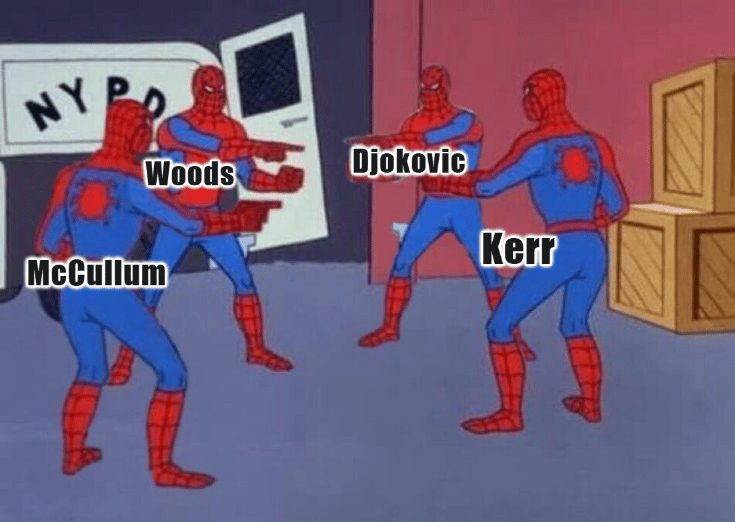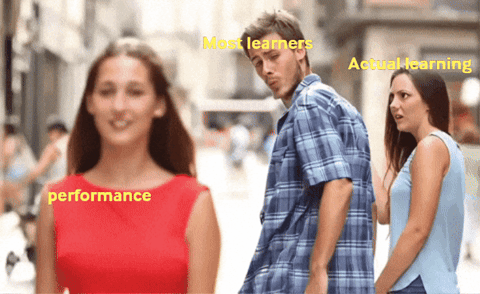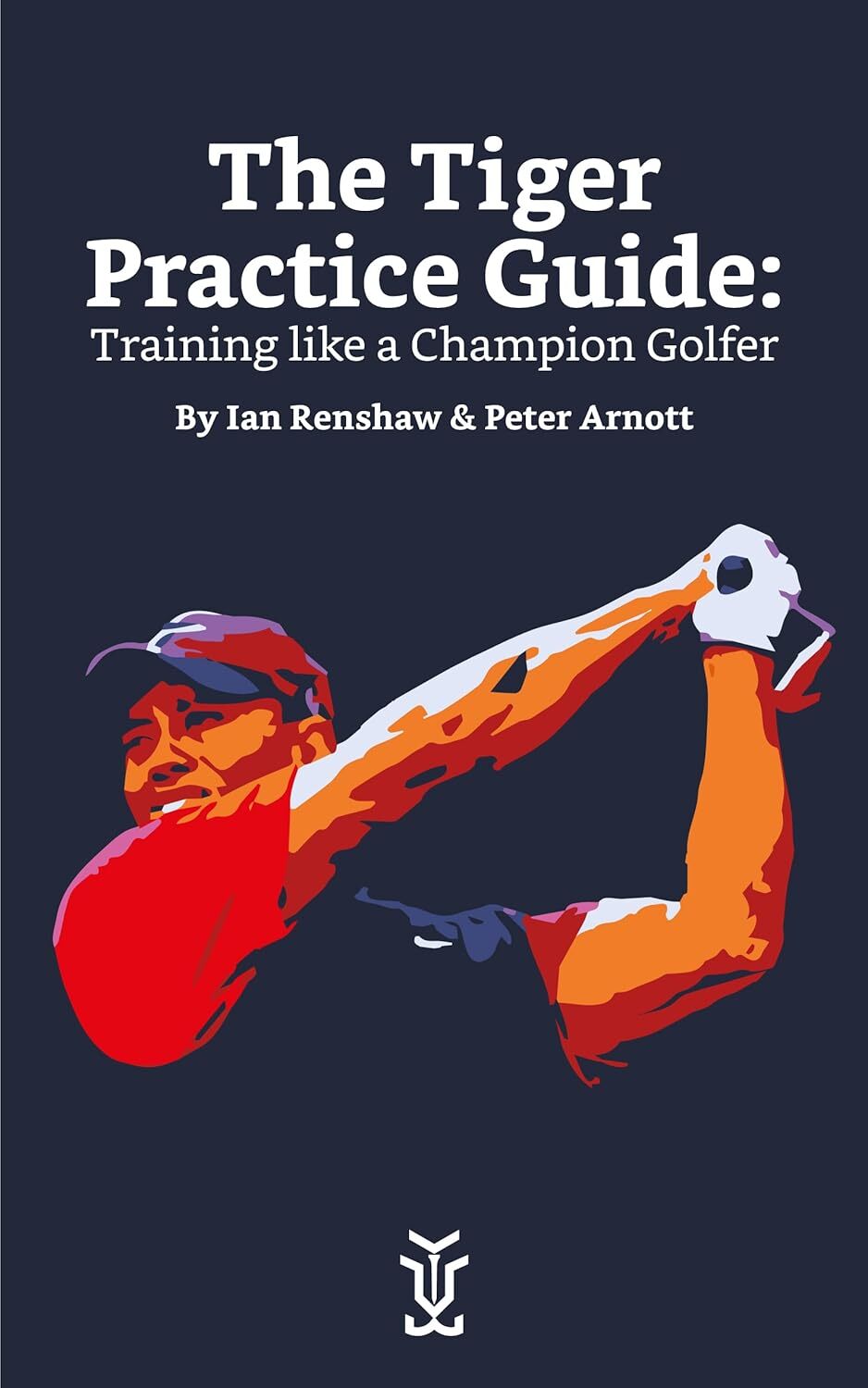- The Deep Dive
- Posts
- The Learning Trap
The Learning Trap
Four legends and what they can teach us about making learning stick

Table of Contents
The Learning Trap
What do Novak Djokovic, Steve Kerr, Brendon McCullum and Tiger Woods all have in common? It sounds like the start of a joke, and if I was funnier I’m sure I could pull something together (Fun fact: I have a pretty fixed mindset about being funny…. I’m not!) Aside from all being incredibly successful, what links them is something less obvious: they understand learning. More specifically, they train in ways that help them learn, not just perform.

That’s where Robert Bjork comes in. You might not know him, and neither might they—but his research helps explain why their approach to training works. Bjork studies human learning and memory, and his theory of “desirable difficulties” helps us understand how to design training that actually sticks.
Conditions of learning that make performance improve rapidly often fail to support long-term retention and transfer, whereas conditions that create challenges and slow the rate of apparent learning often optimise long-term retention and transfer
How do you define learning? If you buy in to above quote, then learning can be defined as long-term retention and transfer. That is, if we’ve learnt something, it’s lasting and stable. We can remember it long after the session/practice, and we can apply it to different situations.
But that’s not always what we see in sport. Often, players can perform a skill well in training, but can’t replicate it a week later or under pressure in a match. That’s not learning, it’s temporary performance. However, because we’ve seen it in training we often think of it as learning (“they’ve got it”). This is the juxtaposition of learning v performance.
To compound this juxtaposition, there is a lot of research (by Bjork, and others) that shows there can be considerable learning occurring across a period of time while no performance improvement can be observed. And the opposite is also true. We can show substantial improvements in performance across training sessions, while in the end it turns out we haven’t really learned (I’m thinking of my year 12 French exams right now…..)
Learning | Performance |
|---|---|
Long term | Short term |
Transfers to different situations or environments | Only works in one situation or environment |
Harder to observe and measure | Easy to observe and measure |
Feels harder and takes longer to see | Feels easy and like we are making progress |

To help us understand this counter-intuitive idea, Bjork went deeper again. He identified two different types of what he called memory strength that explain this idea:
Storage strength - How embedded or interconnected a thing we’ve learnt is with our related skills and knowledge
Retrieval strength - How easily a thing we’re learning can be activated or accessed when we need it
To get to the stage where we’ve learnt something, we need to have strong storage strength. That’s the key to us unlocking learning (remember, long-term, stable, transferable). However, the conditions that maximise developing our storage strength differ from the conditions that most rapidly increase retrieval strength. If learners interpret current retrieval strength (performance) as storage strength (learning), they start to believe in poorer conditions of learning (e.g. unopposed drills, facing throw downs etc.) over better conditions of learning (games with high pressure, facing actual bowlers, scenario’s etc). This is the trap: when performance improves quickly, it feels like learning is happening. But often, it isn’t. If we (or our players) confuse retrieval strength for storage strength, we end up designing training that looks great but doesn’t last. This is where desirable difficulties come in. They are critical in helping us increase our storage strength. We need to understand these if we’re going to develop skilled, smart, adaptable players.
To put really simply….
Performance = retrieval strength now
Learning = storage strength over time
Bjork’s Desirable Difficulties
Interleaving/Variable practice
This is a learning strategy where related skills are practiced in a mixed or random order. Think of a golfer practicing a drive, then a putt, then an approach shot. Or a basketballer shooting from the corner, then the free throw line, then two metres from the hoop. Or a batter facing a bowler who is mixing up their line and length.
Contextual interference
This involves making the environment you’re practising the skill in more variable or unpredictable. This is adding pressure to the activity, increasing the number of defenders in a game like Rugby or Aussie Rules. It might be adding constraints like only being able to play certain shots in golf, tennis or cricket training.
Spaced practice
This is spacing learning out over time, so you cover topics with time between them. It’s structuring a training phase so you cover a new move or strategy on day 1, then don’t cover it again until day 5, then again day 9 and lastly day 15. It might be starting a training with a focus, and then not covering that again until the last activity
Reduced feedback
This one speaks to us directly as coaches. Are we giving too much ‘help’ to our players by the feedback we give. Less feedback might make life more difficult for our players during training, but hopefully you’re starting to see the idea here, it actually enhances long-term learning
Retrieval practice/practice testing
This is testing your learning in a real situation or representative situation. Game simulations, live training runs against real opposition, game scenario’s where you play out the tactic you’ve been practicing. This forces the players to recall what they’ve previously learned.
So how does this all relate to Messrs. Djokovic, Kerr, McCullum and Woods? I believe a significant reason why these four are highly successful players and coaches (and in some cases, both), is because they intuitively understand this learning v performance distinction.
Djokovic is known to train with constraints like games only in the service box, or playing out sets only being able use certain shots (contextual interference).
Woods created game after game throughout his career (not only as a child I might add) to help hone his skills. He was known for always playing the ball where it lied (even if it was plugged, in tree roots etc), because he knew he’d have to play that if it landed there in a real tournament (retrieval practice).
McCullum is bringing approaches to training in his role as England Cricket coach like simulated scenarios (50 to win with three overs left) and bowlers rotating unpredictably (interleaving). As he says
“You’ve got to train with the intensity and mindset that you'll need on the field."
Kerr mimics this sentiment as a philosophy in his role as Head Coach as the Golden State Warriors
“If it’s easy in practice, it’s not preparing you for the chaos of a real NBA game.”
Kerr’s practices are known to be highly game specific, scenario-based and with lots of constraints (not to mention fun too). He’s also borrowed a technique used by Gregg Popovich (in my opinion, the GOAT of NBA coaches) which is having players play through mistakes (in training and game) without rescuing them with a timeout (reduced feedback).
All of this means we need to be intentional about designing training that supports learning, not just short-term performance. If your sessions always look clean and players succeed quickly, ask yourself: are they learning, or just performing? Introduce variability through interleaving—mix up the skills, opponents, or conditions. Add pressure and unpredictability to create contextual interference. Space out key themes across multiple sessions instead of repeating them back-to-back. And consider reducing how much and how quickly you give feedback—let players struggle a little, reflect, and self-correct. These small shifts might feel uncomfortable at first, but they create the kind of “desirable difficulties” that embed learning for the long term. As Bjork’s research shows, the road to lasting improvement is often the one that feels harder. So if it feels harder—it might actually be better.
Quote of the week
“Performance is measurable, but learning can only be inferred from performance: it cannot be observed directly. That is to say, performance is easy to observe whereas learning is not. You can tick a box to show that a student’s performance has moved from x to y, but you can’t necessarily tell whether learning has taken place.”
David Didau, from the book (which I recommend) What if Everything You Knew About Education Was Wrong?
An even deeper dive
A short, but highly entertaining video highlight one of Novak’s games utilising desirable difficulties
I also highly recommend this book too, which explores how Tiger Woods trained and developed into the GOAT of golf (Spoiler alert - lots of games, and use of desirable difficulties):
Want to discuss anything you’ve read? Email us at [email protected]. We’d love to hear from you!
Want to share the Deep Dive with friends? Just send them the link below to subscribe

